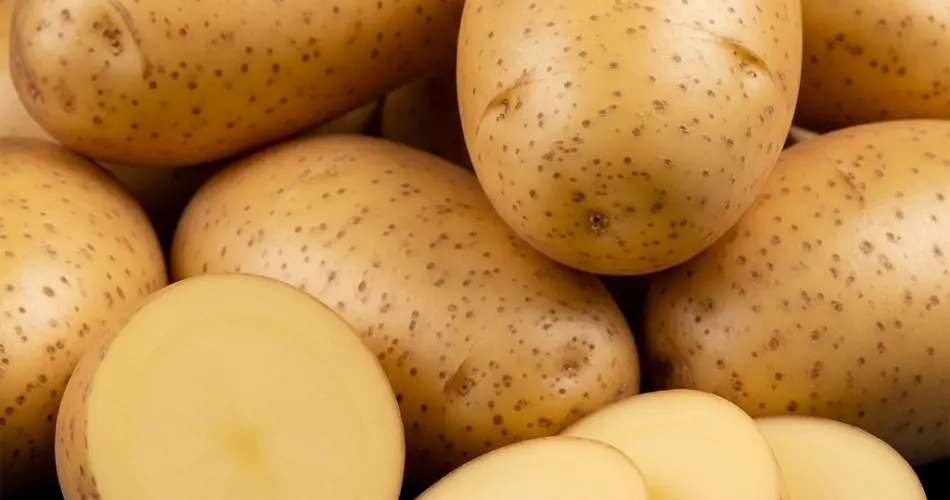Growing potatoes doesn’t have to be back-breaking work. Traditional methods often involve digging trenches, hilling soil, and a lot of effort, but there’s a simpler, no-dig approach that makes potato gardening much easier—perfect for both beginners and seasoned gardeners. This method not only reduces labor but also results in healthy, productive plants.
Why Choose the No-Dig Method?
The no-dig method is based on layering organic materials on top of the soil rather than disturbing the earth by turning it over. This promotes soil health by preserving the natural structure and microorganisms while preventing weed seeds from surfacing. It also saves time and energy, especially if you’re growing potatoes in areas with compacted or rocky soil.
What You’ll Need
To get started, you’ll need just a few basic materials:
-
Certified seed potatoes (sprouted or “chitted” for faster growth)
-
A sunny location
-
Compost, straw, hay, or leaf mulch
-
Cardboard or newspaper (optional for weed suppression)
-
A watering can or hose
You can grow potatoes directly on the ground or even on top of grass or a lawn, making it ideal for gardeners with limited digging options.
Step-by-Step: How to Grow No-Dig Potatoes
1. Choose the Right Spot
Pick a sunny location that gets at least six hours of direct sunlight a day. While potatoes can tolerate partial shade, they grow best with ample sun exposure.
2. Prepare the Ground
If you’re working over grass or weeds, place a layer of cardboard or several layers of newspaper over the area. This acts as a barrier to suppress weeds and grass from growing through while retaining moisture underneath.
3. Place the Potatoes
Lay your seed potatoes directly on top of the cardboard or soil surface. Space them about 12 inches apart. If your seed potatoes have long sprouts, position them so the sprouts face upward.
4. Cover with Mulch
Cover the potatoes with a thick layer (4 to 6 inches) of straw, hay, leaf mulch, or compost. This layer insulates the tubers, retains moisture, and allows stems to push through easily.
As the plants grow, continue adding mulch to maintain coverage and protect developing potatoes from sunlight, which can turn them green and make them inedible.
5. Watering and Maintenance
Potatoes need consistent moisture, especially during tuber formation. Water regularly, ensuring the mulch layer stays damp but not soggy. Avoid letting the mulch dry out completely.
Since there’s no soil disturbance, weed growth is minimal. However, remove any weeds that manage to break through the mulch. You may also notice fewer pests and diseases compared to traditional methods, thanks to improved airflow and reduced soil contact.
Harvesting Your Potatoes
When the potato plants flower and the foliage begins to yellow and die back, it’s time to harvest. Simply peel back the mulch layer and retrieve your potatoes—no digging required! Start from the edges and work your way in, gently brushing aside the mulch to find the tubers.
You can harvest new (baby) potatoes earlier if you prefer, just be careful not to damage the rest of the plant if you want it to continue producing.
Benefits of the No-Dig Potato Method
-
Less Labor: Say goodbye to heavy digging and soil turning.
-
Improved Soil Health: Encourages earthworms and microbial activity.
-
Fewer Weeds: The thick mulch layer smothers unwanted growth.
-
Cleaner Potatoes: Since they’re not buried in soil, harvested tubers are usually cleaner.
-
Great for Poor Soils: Ideal for growing in areas with rocky, compacted, or low-nutrient soils.
Tips for Success
-
Use high-quality seed potatoes to reduce the risk of disease.
-
Add a layer of compost over the mulch if your plants seem undernourished.
-
Rotate crops each year to prevent disease build-up and nutrient depletion.
-
Don’t forget to label your potato varieties if growing more than one kind.
Final Thoughts
The no-dig method for growing potatoes is a smart, low-maintenance alternative to traditional gardening. With just a little mulch and patience, you can enjoy a satisfying harvest with minimal effort. Whether you’re working with a large plot or a small patch of ground, this technique can help you grow abundant, healthy potatoes the easy way.



